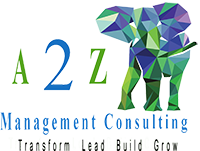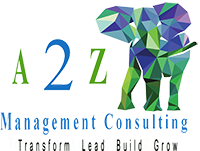This is particularly evident in industries like electronics, where the pace of innovation can render equipment outdated within a few years. By considering these various perspectives and strategies, organizations can effectively extend the useful life of their assets, ensuring that they continue to contribute value over a longer period. This not only has a positive impact on the bottom line but also supports broader sustainability and efficiency goals.
What Are Some Methods for Depreciating Tangible Assets?
Asset depreciation and management are critical components of financial planning and analysis for businesses across various industries. As we look towards the future, several trends are emerging that are set to reshape the way organizations approach the depreciation of their assets and manage their lifecycles. Technological advancements, regulatory changes, and evolving business models are all contributing to a dynamic landscape where the traditional methods of asset management may no longer suffice. Companies are increasingly seeking ways to optimize asset utilization, extend useful life, and ensure compliance with international accounting standards, all while maintaining cost-effectiveness and operational efficiency. Industry standards play a pivotal role in determining the useful life of an asset, which is a key factor in depreciation calculations.
How to Determine a Tangible Asset’s Useful Life?
For tax purposes, depreciation allows businesses to deduct the cost of the purchased asset from their income, which can significantly reduce their tax burden. However, the method and rate of depreciation can vary depending on the type of asset and the tax laws of the country in which the business operates. The useful life of an asset is a critical estimate for businesses, as it affects both the timing of asset replacement and the calculation of depreciation expenses. This estimate is not a fixed figure; rather, it is influenced by a variety of factors that can extend or reduce the period during which an asset is considered to be economically beneficial.
📆 Date: May 3-4, 2025🕛 Time: 8:30-11:30 AM EST📍 Venue: OnlineInstructor: Dheeraj Vaidya, CFA, FRM
- For example, the useful life of a computer may be estimated to be three to five years, based on industry standards.
- This shift necessitates a reevaluation of traditional asset lifecycle models and depreciation schedules.
- From a financial perspective, the goal is to minimize costs while maximizing the value derived from each asset.
- Regular, proactive maintenance can significantly extend an asset’s useful life by preventing wear and tear and identifying issues before they lead to breakdowns.
- Simply put, the useful life of an asset represents the period during which the asset provides value and contributes to the operations of the business before it becomes worn out, outdated, or needs to be replaced.
- Conversely, low depreciation may indicate underinvestment or that assets are nearing the end of their useful lives, potentially leading to increased capital expenditures in the future.
If the estimated useful life of the machinery is 10 years, it means that the business expects to receive economic value from it for a decade before it becomes less efficient or needs replacement. Accurate depreciation calculations are vital for preparing financial statements and assessing the financial health of a company. Under the straight-line method, the annual depreciation expense is $5 million, so we can divide our depreciable cost by the depreciation expense to determine the implied useful life assumption by management. The Useful Life of a fixed or intangible asset represents the estimated number of periods in which it will continue to provide economic utility to a company.
Effective asset management ensures that the assets are maintained, accounted for, and utilized efficiently to maximize their value throughout their useful life. Depreciation, on the other hand, is the systematic allocation of an asset’s cost over its useful life. Organizations must adopt best practices in both areas to ensure accurate financial reporting, compliance with regulations, and informed decision-making.
For example, if a company purchases a piece of machinery for $100,000 with a salvage value of $20,000 and an estimated useful life of 8 years, the annual straight-line depreciation expense would be $10,000. Technology’s impact on asset depreciation is profound, requiring businesses to adopt more sophisticated accounting practices. As technology continues to evolve, so too must the methods for calculating depreciation, ensuring they reflect the true economic value of assets in a tech-driven world. From an accountant’s perspective, the challenge lies in determining the appropriate depreciation method that reflects the asset’s usage and technological relevance. The Straight-Line method may no longer be suitable for tech-heavy assets whose value diminishes faster due to technological advancements.
- The useful life of an asset is a critical estimate for businesses, as it affects both the timing of asset replacement and the calculation of depreciation expenses.
- In the realm of accounting and finance, the assessment of an asset’s useful life is a critical component that influences not only depreciation calculations but also strategic planning and budgeting.
- The value is depreciated in equal amounts over the course of the estimated useful life.
- Businesses may also elect to take higher depreciation levels at the beginning of the useful life period, with declining depreciation values over the duration of the time span, using an accelerated model.
legal
In practice, a company may choose a method that best reflects the asset’s wear and tear. A delivery truck, for instance, might use the units of production method based on mileage, while office furniture is more suited to straight-line depreciation. If the machine is expected to produce 500,000 units over its life, and it produces 50,000 units in the first year, the depreciation expense would be based on 10% of the machine’s cost.
From a financial perspective, the initial quality and cost of the asset play significant roles. Conversely, cheaper assets may incur more maintenance costs and have a shorter useful life. Different tax jurisdictions may have varying rules on how depreciation is calculated and the acceptable methods for different types of assets. By comparing the initial cost of the asset with the estimated future cash flows it is expected to generate over its useful life, businesses can evaluate the profitability and efficiency of their investment decisions. When available, historical data can prove extremely helpful for determining an asset’s useful life. For example, services like Carfax provide vehicle history information to individuals and businesses.
Asset depreciation range was used by the IRS to calculate the economic life of business assets. Howard B. Levy, CPA is a principal and director of technical services at Piercy Bowler Taylor & Kern, Las Vegas, Nev. Assets the IRS estimates to have a useful lifespan of three years includes horses that are two years or older, tractors, and tractor units.
For example, the depreciation of an asset purchased for $1 million with an estimated useful life of 10 years is $100,000 per year. Operations Managers look at useful life in terms of functionality and efficiency, often pushing assets beyond their accounting life if they continue to serve the operational needs without excessive maintenance costs. From an accountant’s perspective, depreciation is not just a way to allocate the cost of an asset over its useful life; it’s also a reflection of the asset’s consumption and the generation of revenue. For instance, a delivery truck purchased by a logistics company has a direct impact on revenue generation, and its depreciation is a measure of the service potential consumed in the process. In these circumstances, proactive maintenance and other methods are still necessary to ensure assets reach their expected life and do not have to be replaced prematurely. By complying with these accounting standards, companies ensure that their financial statements are prepared in accordance with a common set of rules and principles.
All physical assets are subject to aging and deterioration.This section provides information on systems used for inventorying assets. The lease transfers ownership of the personal property to the lessee by the end of the lease term. Cost incurred during the preliminary design stage (i.e., conceptual formulation, design, and testing of alternatives) and cost incurred after software deployment (i.e., data conversion, maintenance and support) are expensed. An asset’s useful life is the period of time for which the asset will be economically feasible for use in a business.
Everything You Need To Master Financial Modeling
By considering these factors, businesses can make more informed decisions about asset management and depreciation strategies, ultimately affecting their financial health and operational efficiency. Understanding the interplay of these elements is key to maximizing the value derived from each asset. The concept of useful life in asset management is multifaceted, with each perspective contributing to a holistic approach to managing an organization’s assets. It requires a delicate balance between financial prudence, operational efficiency, strategic foresight, and environmental responsibility. Understanding and navigating these dimensions is key to optimizing the performance and value of assets throughout their lifecycle.
How Does the Useful Life Assumption Impact Depreciation?
J.B. Maverick is an active trader, commodity futures broker, and stock market analyst 17+ years of experience, in addition to 10+ years of experience as a finance writer and book editor. PwC refers to the US member firm or one of its subsidiaries or affiliates, and may sometimes refer to the PwC network. This content is for general information purposes only, and should not be used as a substitute for consultation with professional advisors.
From an accounting perspective, depreciation is a non-cash expense that reduces the book value of an asset. It is important to note that while it decreases useful life in accounting net income on the income statement, it does not affect the company’s cash flow. The main methods of depreciation are straight-line, declining balance, and units of production, each with its own implications for tax reporting. Industry standards are integral to the process of determining the useful life of assets. They provide a harmonized framework that balances the technical and financial aspects of asset management, ensuring that depreciation calculations are both realistic and compliant with regulatory expectations.
Tax authorities often have specific guidelines on what constitutes a reasonable useful life, and diverging from these can lead to audits, disputes, and potential penalties. Moreover, the internal Revenue service (IRS) in the United States, for example, provides detailed classifications and depreciation schedules in its Publication 946, which businesses must adhere to for tax reporting purposes. Understanding the intricacies of depreciation and the lifespan of assets is essential for accurate financial reporting and effective asset management. It allows businesses to plan for future investments and understand the true cost of maintaining their operational capacity. By considering the various methods and implications of depreciation, companies can make informed decisions that align with their financial and strategic goals. Asset management and depreciation are critical components of financial and accounting practices for any organization that deals with physical assets.

